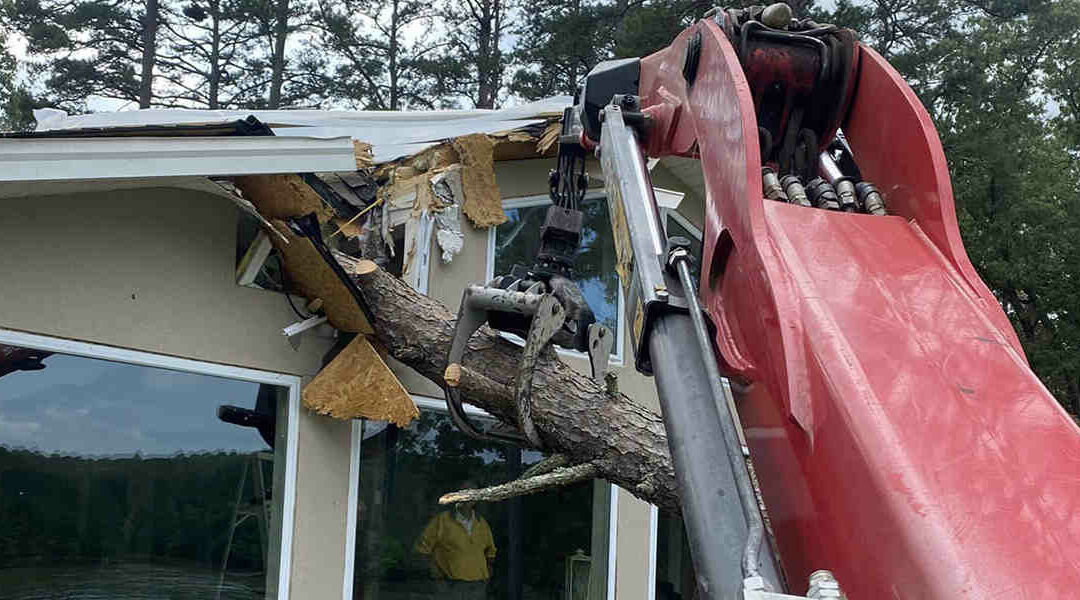Does one of your arboreal specimens look painfully ready to topple over? If it grows at a precarious angle or its branches constantly make contact with your abode, it might cause you to break out in a cold sweat every time a windstorm brews.
As the go-to tree service company in Malvern, we at Urban Jacks know how to prevent a tree from falling on a house and other structures. Keep reading as we list our top tips for safeguarding your property.
Stay Vigilant During the Storm Season
High winds and heavy rain can weaken trees, making them more prone to tipping over. Keep an eye on your specimens, especially those near structures. If you notice any signs of instability, such as swaying more than usual, shedding branches, or a leaning trunk, it might be high time to call the professionals.
Checking your garden before the rough weather hits is important, but don’t underestimate the power of a post-storm sweep. Once it’s safe to go outside, take the time to assess your specimens. Look for split branches, cracks in the trunk, or upturned roots; these are telltale signs that your tree is weakening.
Keep Your Trees Healthy
While trees are fairly self-sufficient, they are still living, breathing entities that benefit from a little bit of care. Maintenance can help prevent a tree from falling on a house:
- Water adequately: Like us, trees need moisture to thrive, but don’t drown them! A deep watering once a week should suffice, especially during dry spells.
- Use mulch: Mulch acts like a protective blanket for your specimens, helping retain moisture, suppress weeds, and regulate soil temperature. Apply two to four inches of material around the base without touching the trunk.
- Fertilize when needed: Your trees may need a nutrient boost if your soil isn’t naturally rich. Conduct a soil test to determine what they crave.
- Watch out for affliction: Discolored leaves, branch dieback, bark abnormalities, or other alarming symptoms can indicate an ongoing attack from pests or diseases.
Remove High-Risk Branches
Do you see a large branch that hangs above your roof? Looming limbs can become veritable wrecking balls during stormy weather conditions, so we recommend you adopt a “better safe than sorry” approach.
Nip the problem in the bud by proactively trimming these branches or, better yet, removing the whole tree entirely. If you can’t find yourself to part with them due to their aesthetic appeal, installing cables or braces can be an effective compromise.
Plant at the Right Spots
You obviously can’t dictate where existing trees grow, but when it comes to planting new ones, strategic placement can make a world of difference. Avoid establishing large specimens with wide root systems close to your house, other structures, or power lines.
While you may love the idea of a towering oak providing ample shade right next to your porch, fast forward 20 years, and you might have to deal with a wooden behemoth threatening your peace of mind (and home insurance premiums). Stick to smaller, less aggressive species for areas close to your property.
Consult a Local Arborist
Diligently examining your trees and caring for them takes a lot of time and energy. If you want a helping hand or need expert advice, our crew at Urban Jacks is ready to swing into action. We can prevent a tree from falling on a house with:
- Emergency tree removals
- Regular maintenance checks
- Cabling and bracing installations
- Professional pruning
- And more
Contact Urban Jacks at (501) 547-4018 today, and visit our blog to learn about root rot treatment.

